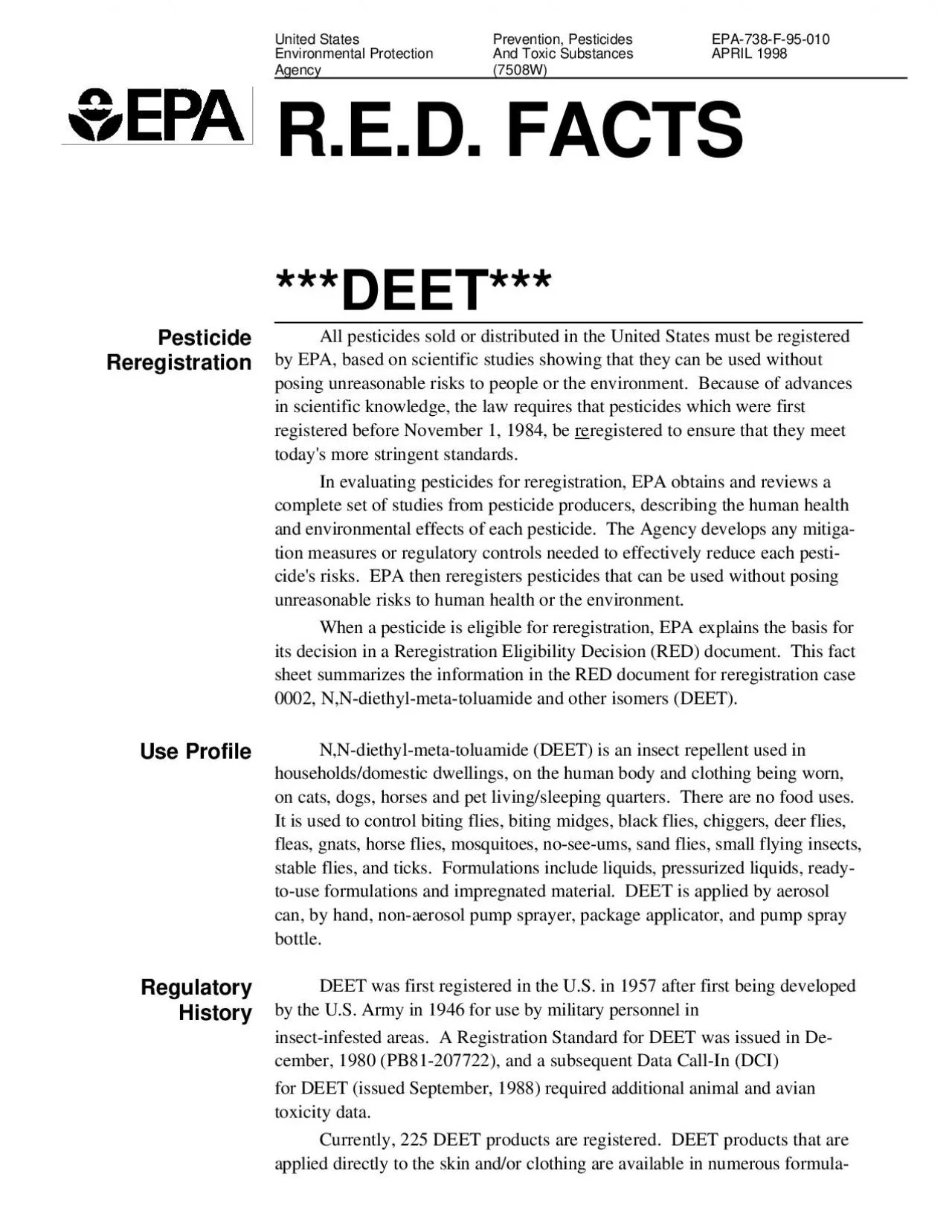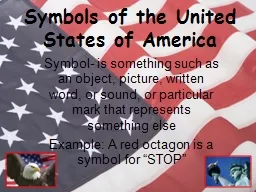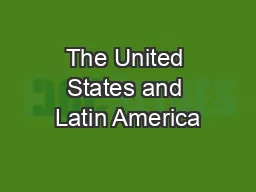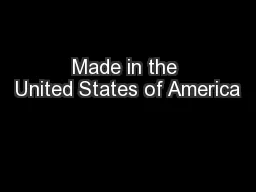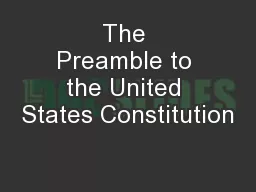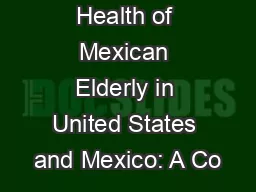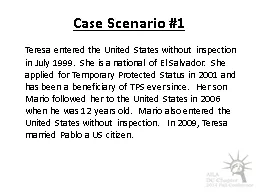PDF-United States Prevention PesticidesEPA738F95010Environmental Prote
Author : wilson | Published Date : 2021-09-28
registered to ensure that they meettodays more stringent standards In evaluating pesticides for reregistration EPA obtains and reviews acomplete set of studies from
Presentation Embed Code
Download Presentation
Download Presentation The PPT/PDF document "United States Prevention PesticidesEPA73..." is the property of its rightful owner. Permission is granted to download and print the materials on this website for personal, non-commercial use only, and to display it on your personal computer provided you do not modify the materials and that you retain all copyright notices contained in the materials. By downloading content from our website, you accept the terms of this agreement.
United States Prevention PesticidesEPA738F95010Environmental Prote: Transcript
Download Rules Of Document
"United States Prevention PesticidesEPA738F95010Environmental Prote"The content belongs to its owner. You may download and print it for personal use, without modification, and keep all copyright notices. By downloading, you agree to these terms.
Related Documents

